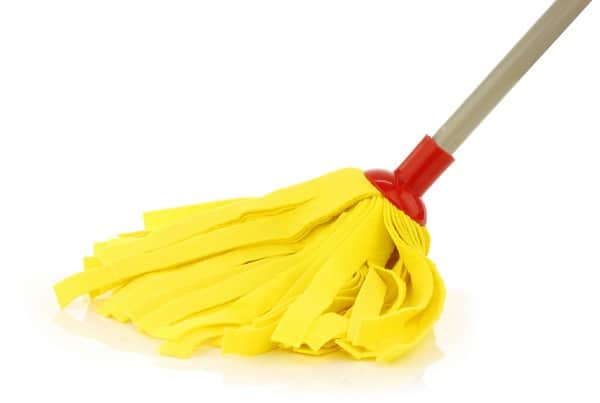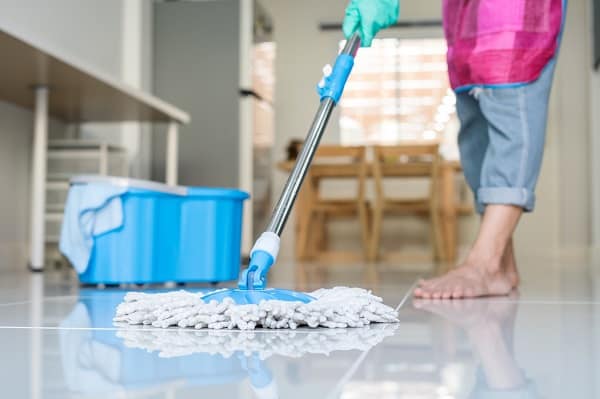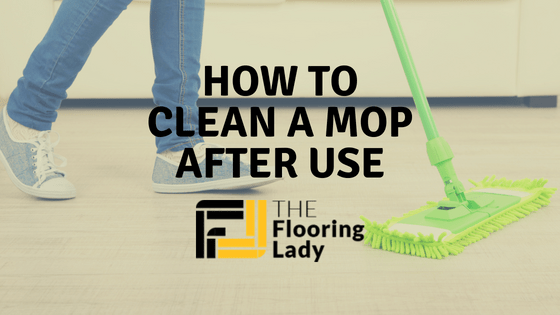Everyone wants to know how to clean a mop after use. You should also understand why it's important to clean it.
Although these products often seem like they might be self-cleaning, they're really not.
Although there appear to be many ways to keep your mop clean, there are only a few truly efficient methods.
This article will give you 4 tips on how to clean a mop after use that you can use when it's dry and when it's wet.
We'll also list the benefits of doing this to explain why it's worth doing.
Cleaning a Dry Mop

You won't always use a wet mop to clean the house, especially if all you're doing is some light dusting. If you're wondering how to clean a mop after use and your mop hasn't been in contact with water or liquid spills, the answer is simple.
For starters, it's best if you do this outside. Start by shaking the mop hard to remove all the particles and dust from it. If it still has dust on it, use some soapy water and soak it for a few minutes.
Remove the excess water and just leave it out to dry naturally.
Cleaning a Mop in the Washing Machine
Most mops come with removable heads. If you own one, don't be afraid to use your washing machine once it gets really dirty. Just remember that sponge mops can't be cleaned with this method.
Add some bleach to the washing machine and put your mop inside. Don't put any other clothes inside. You could add other mop heads or rags you use for cleaning around the house.
Put the machine on a normal cycle and wait for it to finish. Once it's done, remove the mop and squeeze out the excess water. It's not generally recommended that you use a drying cycle on mop heads.
Once the water is squeezed out, hang your mop somewhere out to dry as you would with your clothes.
Cleaning a Mop in the Dishwasher

Do you want to know how to clean a mop after use without using bleach? Use the dishwasher.
Again, this only works on mops with removable heads and not on sponge mops. Instead of using bleach, this time you will use one cup of vinegar. Put it in the detergent dispenser and make sure your dishwasher is empty.
You'll want to put the mop head on the top rack. After it's done, squeeze any remaining water out and leave your mop to dry.
Use Your Hands
If you don't have a removable mop head or you don't want to run your machines with bleach and vinegar, there's just one option left. It's a method people have been using since the mop was first invented.
The rinse and soak method can be very thorough if you don't mind getting wet and dirty. Soak the mop in a bucket with hot water and bleach. Use approximately one cup of bleach per 2 gallons of water.
There are some snags with this method so here are some friendly pointers. If you leave the mop soaking for too long, the combination of warmth and moisture will promote the growth of bacteria and even mold.
You'll also have to be careful to keep kids and pets away from the soaking solution. You should also make sure that the mop is thoroughly rinsed before you let it soak. Letting it stew in its own mess won't accomplish anything.
Why You Should Clean Mops After Use
Cleaning your mop regularly accomplishes a couple of things. First, it extends its life. A clean mop doesn't degrade as easily over time and has less chance of deteriorating while in storage.
Secondly, it means you can use the mop whenever you need to. Not everyone cleans their mop after use, which means that whenever there's an emergency such as a spill, you can't use the mop immediately as you have to wash it first.
Cleaning a dirty mop that's dried out in storage is harder and takes a lot of time.
Fun facts: Ever wondered who invented the mop? Read here to find out!